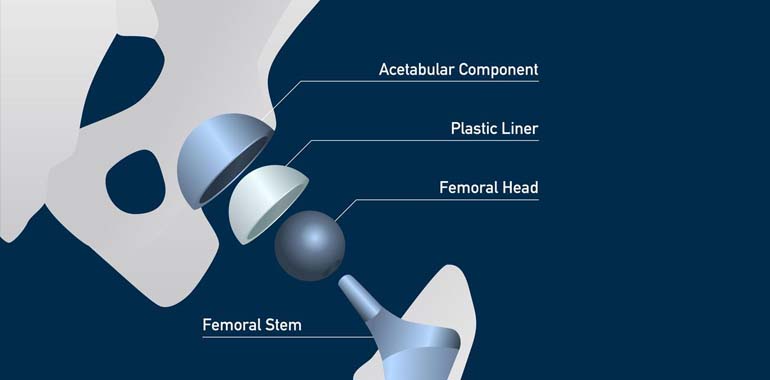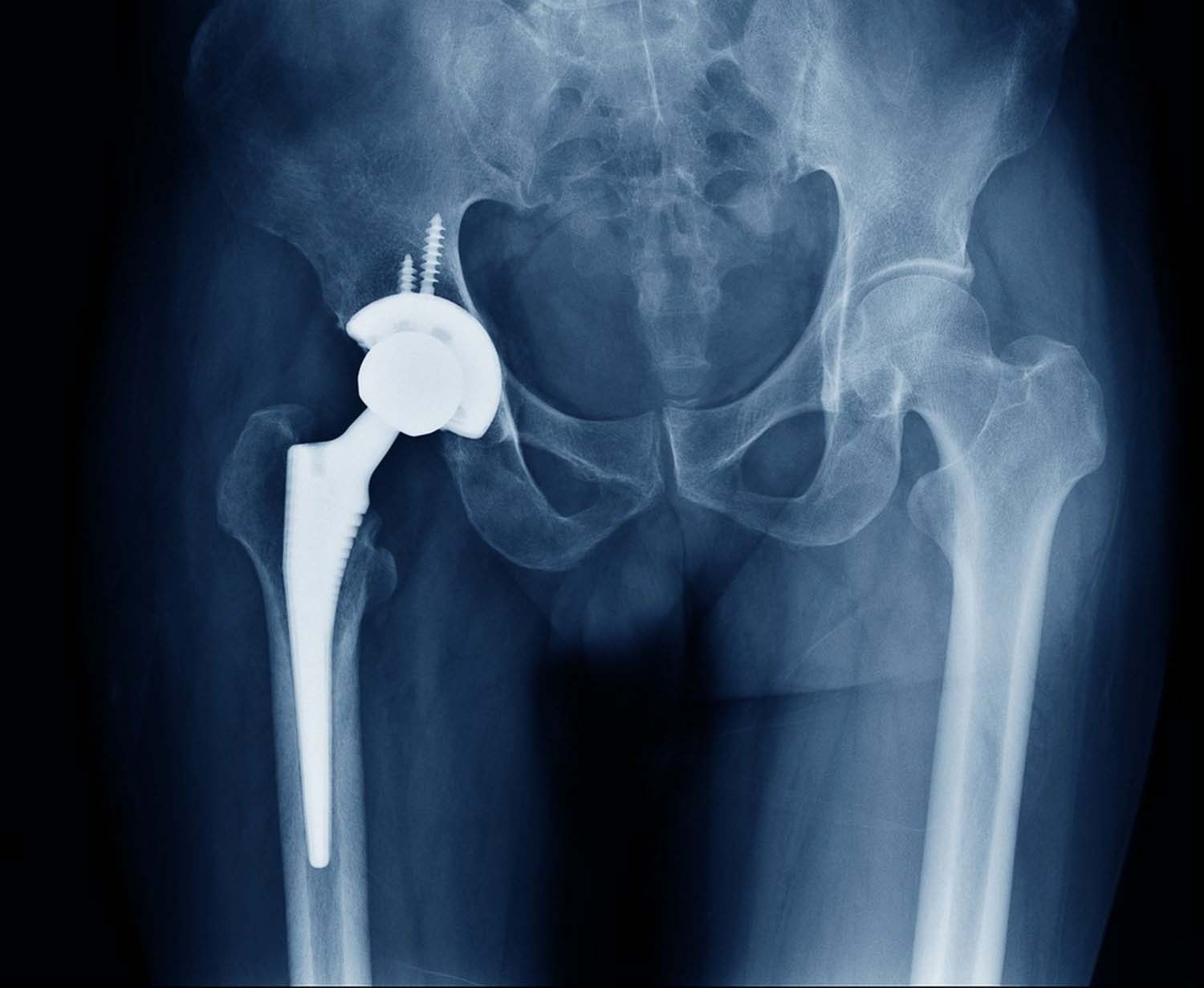
The hip joint is one of the body's largest weight-bearing joints, located between the thighbone (femur) and the pelvis (acetabulum). It is a ball and socket joint in which the head of the femur is the ball and the pelvic acetabulum forms the socket. The joint surface is covered by a smooth articular cartilage which acts as a cushion and enables smooth movements of the joint. When the cartilage is worn away due to arthritis (either due to injury, degeneration, inflammatory process), there is pain, stiffness and restricted movement of the hip.
Total hip replacement is a surgical procedure in which the damaged cartilage and bone is removed from the hip joint and replaced with artificial components.
This allows the hip to be pain free and move smoothly aiming to establish healthy hip function & provide you with a superior quality of life.
Total Hip replacement surgery is commonly indicated for osteoarthritis of the hip. Your doctor may advise total hip replacement if you have:

Dr Jay Shah & his team will provide you with instructions on how to prepare before your surgery. You will be admitted to the hospital an evening prior or on the day of surgery. You will receive a regional (spinal) anaesthetic. In some patients general or epidural anaesthetic may be required.
Dr Jay will make an incision on the side of your hip and expose and dislocate your hip joint.
Using specialised instrumentation and jigs, the damaged/degenerated portion of the hip is cut, sized and shaped to fit the components of the hip replacement. The hip joint is balanced and trialled to ensure stability and correct alignment.
The hip implants are then fitted with or with out the use of special bone cement. The cup is made of metal which sits in the acetabular socket, the stem is made of metal inserted into the femur. The bearing surfaces which include the femoral head (metal or ceramic) and liner (plastic or ceramic), articulate with each other.
An injection of medication designed to provide post surgery pain relief will be given within your hip joint.
The hip will then be closed using stitches and clips.
Following dressing of the wound you will be shifted to recovery and then to your room.
Usually you will spend 2-3 days in the hospital following your total hip replacement.
You will be encouraged to begin certain movements immediately after surgery to aid in rapid recovery.
A physiotherapist will also visit you and start you on your rehabilitation plan.
You are made to walk on the same day of surgery or at most by the next day.
Before leaving the hospital you will be made confident of walking, using the toilet and going up and down a few stairs.
Before discharge appointments will be made for your follow ups and for removal of clips.